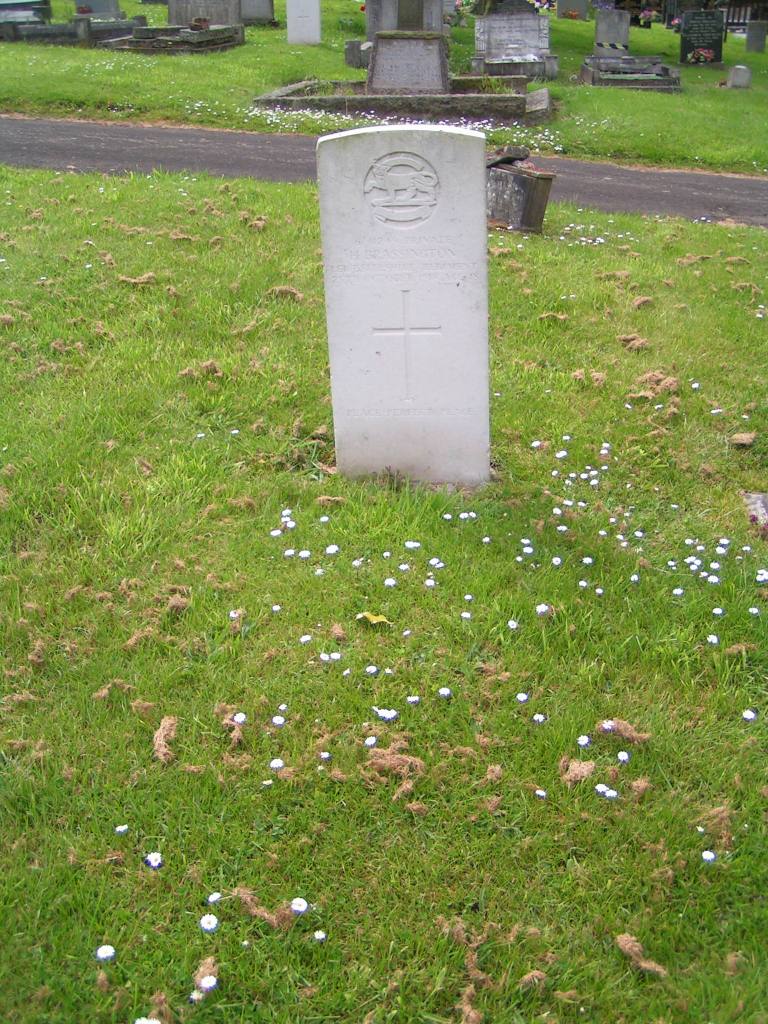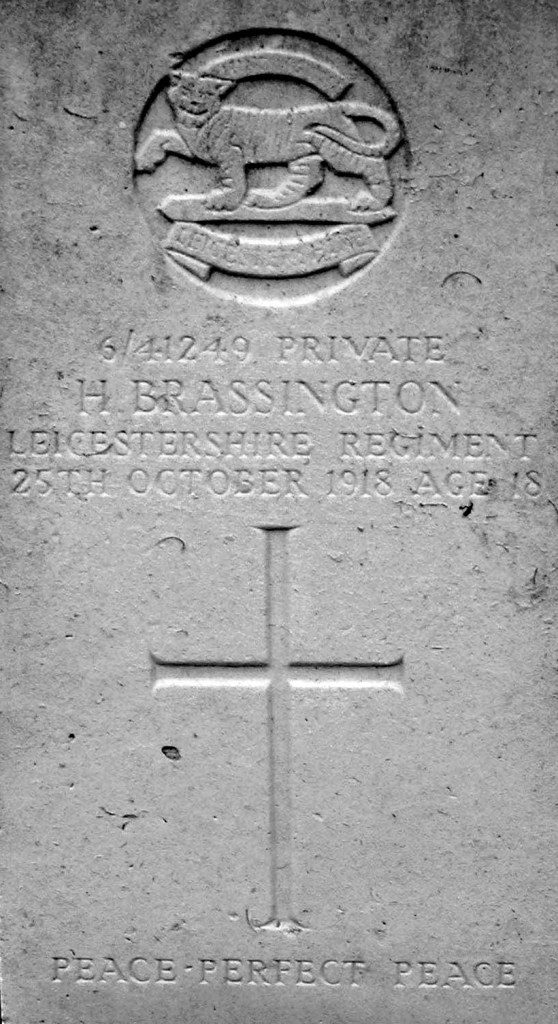BRASSINGTON, HENRY OR HARRY
|
|
Source |
|
CWGC |
SDGW |
Uttoxeter Advertiser |
Other |
|
Parents |
Henry and
Gertrude Brassington |
Yes |
|
|
2f, 3 |
|
Henry
Brassington Sr |
|
|
|
2b, 2f |
|
Where born |
Uttoxeter,
Staffordshire |
|
Yes |
|
2d |
|
When born |
July 1900 |
|
|
|
2a |
|
Address |
27, John Street,
Uttoxeter (with Parents) |
Yes |
|
1a |
2a 2f, 3 |
|
Spouse |
No |
|
|
|
2f |
|
Children |
|
|
|
|
2f |
|
Employment
Before Joining up |
Farm Hand |
|
|
|
2a, 2d |
|
Where enlisted |
Walsall,
Staffordshire |
|
Yes |
|
2a |
|
When enlisted |
12 August 1918 |
|
|
|
2a, 2c, 2g |
|
Regiment &
Battalion |
Leicestershire
Regiment |
Yes |
|
1a |
2a, 2c, 3 |
|
Y.S. Battn |
|
|
|
2a |
|
53rd
Bn |
|
|
|
2c |
|
13th
(S) Bn, Nottinghamshire and Derbyshire Regiment 13th Bn -
WRONG |
|
|
|
3 |
|
Nottinghamshire
and Derbyshire Regiment 13th Bn - WRONG |
|
Yes |
|
|
|
Rank |
Private |
Yes |
Yes |
1a, 1b |
2g, 3 |
|
Service Number |
6/41249 |
Yes |
Yes |
|
2a, 2d, 3 |
|
Date of Death |
25 October 1918 |
Yes |
Yes |
1a |
2g, 3 |
|
Age at time of
death |
18 |
Yes |
|
|
|
|
Where Killed or
died |
England –
Clipstone Military Hospital |
|
|
1a, 1b |
2g, 3 |
|
How he died |
Illness – septic
pneumonia |
|
|
1a |
3 |
|
Illness -
pneumonia |
|
|
|
2g |
|
Location of
Grave or Memorial |
Uttoxeter
Cemetery - Grave New. I. 889. |
Yes |
|
|
6 |
|
Uttoxeter Town
War Memorial |
|
|
|
3 |
|
Awards |
|
|
|
|
|
Before
he joined-up he was employed as a farm hand2a and lived with his
parents2a.
The records tell
us that Harry was not called-up for service until 12th August 19182g.
This was only three months before the armistice. We wonder if he would have
lived if he had not been drafted into the army. Did he contract pneumonia as a
result of the harsh drills and route marches in his basic training?
Luckily for us,
Harry’s Service Records have been preserved in the National Archives2.
They only just survived the incendiary attacks during the Blitz of the Second
World War. Only about 10% of the non-officer records were saved and Harry’s
records must have been rescued while smouldering. The pagers are very charred.
Harry enlisted on 12th
August 19182a at the age of 18 years and one month2a. That
gives his date of birth as about July 1900.
At the time of enlistment he was 5ft 6
¼ inches tall2b and had a chest measurement of 36 ½ inches2b.
He gave his religion as Church of
Englandca.
The record for his medical examination2e
is difficult to read and little can be made out. It does tell us that his
physical development was good and that he had a defect described as “Thick Apex
Boot” (the last word is particularly hard to read, so there is a chance that it
might not say “Boot”)
At 18, he was too young for service overseas, so he was
serving in England.
He died in hospital of septic
pneumonia at Clipstone Military Hospital1a. His parents were informed
of his illness during the last week and made it to the hospital in time to see
him before he died1a. Unfortunately, we do not think that they will
have been able to hold a conversation with him because of the details given in
the hospital report, which says that he was delirious2e.
He was due to have come home on leave
the week after he died1a.
Harry’s records in the National
Archives includes a report from the hospital2e. It is scorched and
the date of the entry is illegible. The handwriting is very decorative, but
extremely difficult to read!
It says something along the lines of:
???????? Physical signs Left lung.
Respirations 40 pulse 128.
No improvement under treatment.
Delirium constant until collapse &
death.
Treatment: 2mm ???Hydrochloride
20???????? Brandy.
At the time of his death Harry had a
brother James Brassington, who was 23 years old, and a sister Gertrude
Elizabeth, who was 14 years old2f. James was living at 2 John Street,
Uttoxeter2f, and Gertrude was living with their parents2f.
On 6th
November 1918 the Uttoxeter Advertiser published an account of his funeral1b,
which said that his coffin was brought back to Uttoxeter by railand was met
at the station by a squad of soldiers. They, with a detachment of
machine-gunners from the Rugeley Camp, went before the funeral cortege
bearing reversed arms.
Soldiers from another
Midland Camp also acted as bearers and members of the local branch of
Comrades of the Great War and a detachment of the Uttoxeter Volunteers also
attended.
There was also a large
attendance of sympathetic townsfolk and relatives.
Harry’s coffin was draped
with the Union Flag. Volleys were fired over his grave by the firing party
and the ceremony was concluded with the sounding of ‘The Last Post’.
A lot of people sent
floral tributes, including his Commanding Officer and his battalion of the
Leicestershire Regiment.
Harry was buried in the
same grave as his sister, who had died just a few years beforehand1b.
The grave is now only marked by Harry’s military headstone. Unfortunately,
his sister’s grave is unmarked6.
 |
 |
|
His grave is in Uttoxeter Cemetery. The
inscription at the bottom of his headstone reads “Peace perfect
peace”. |
